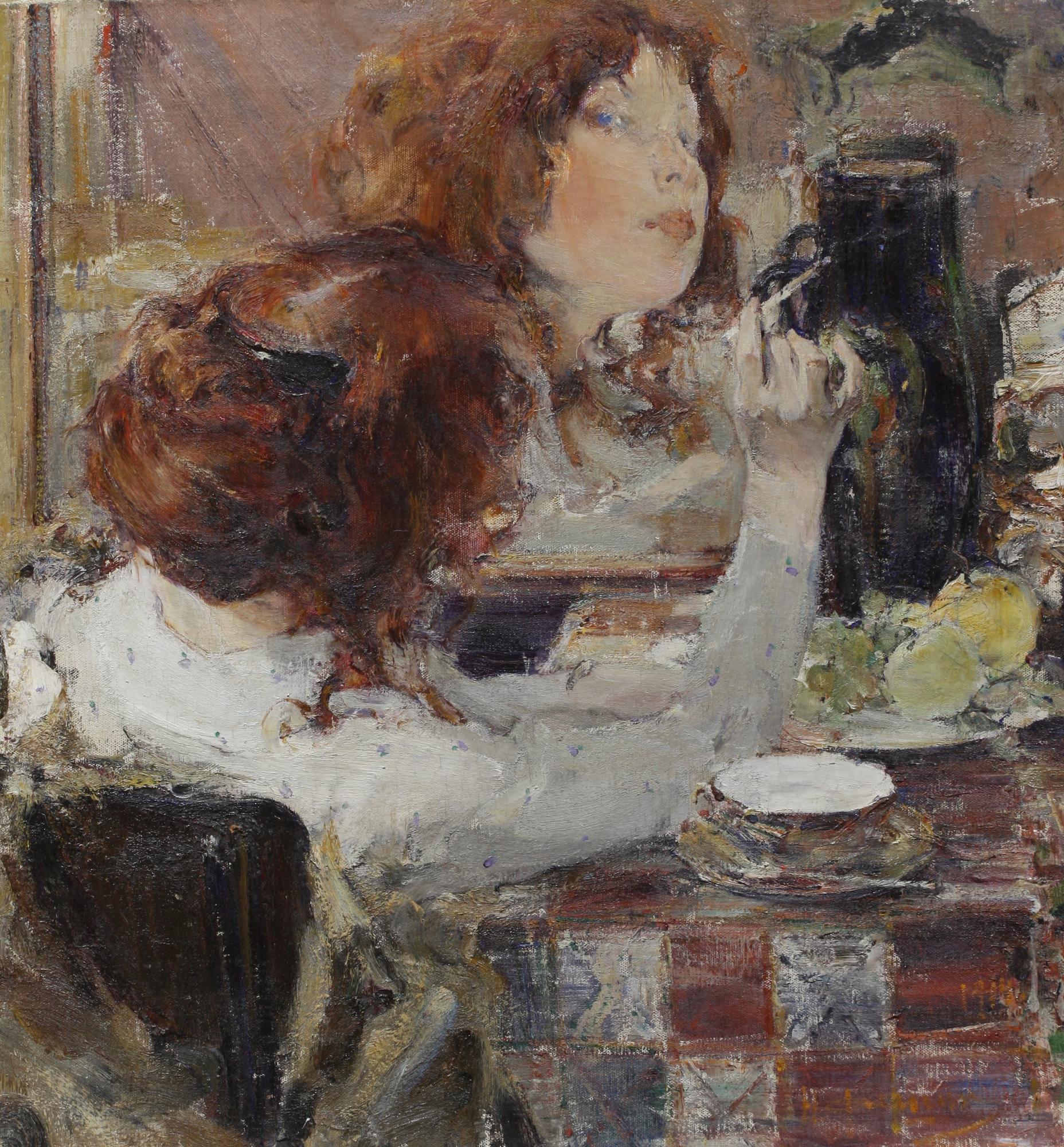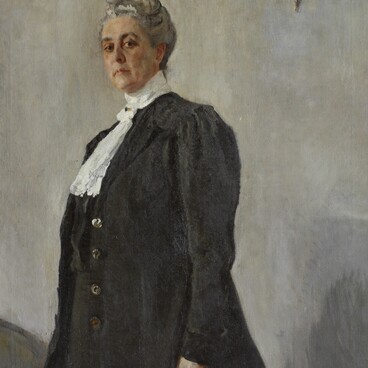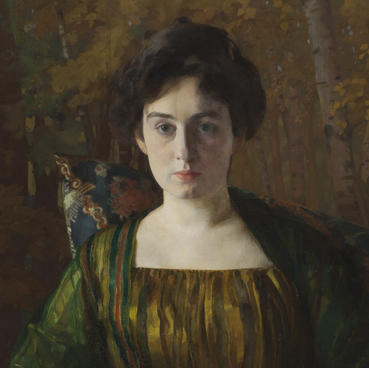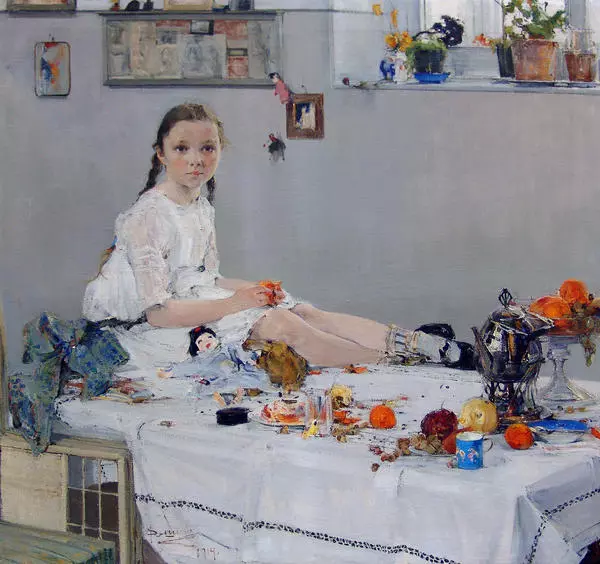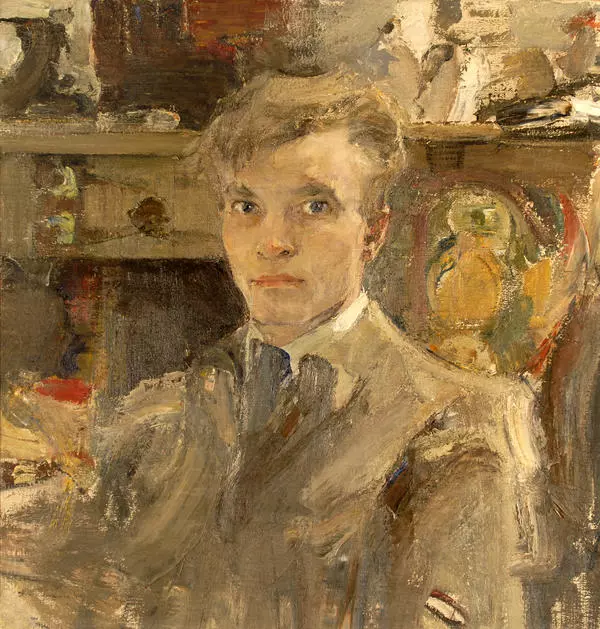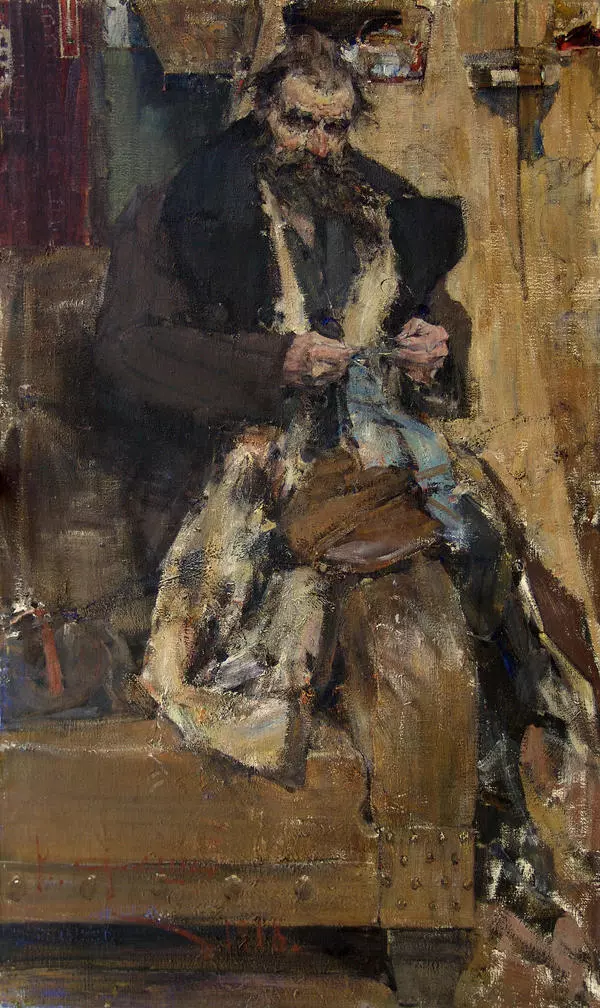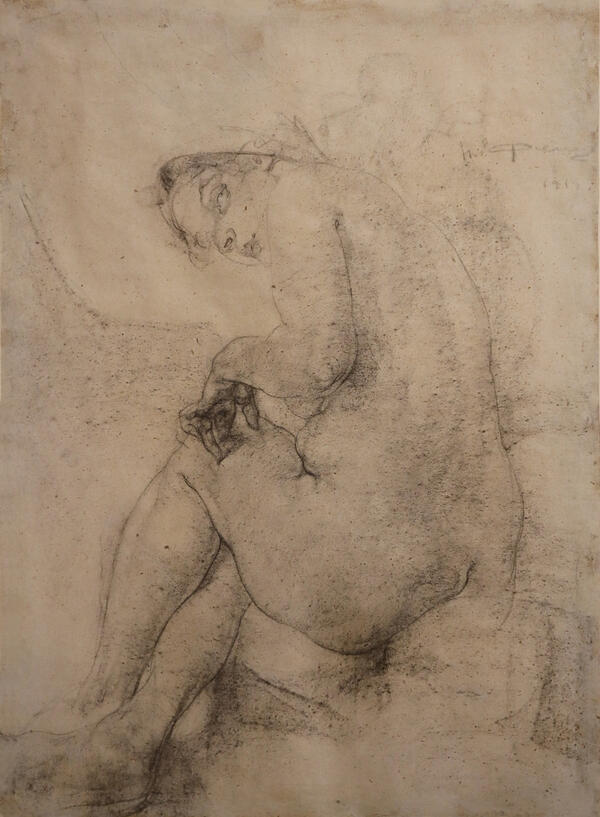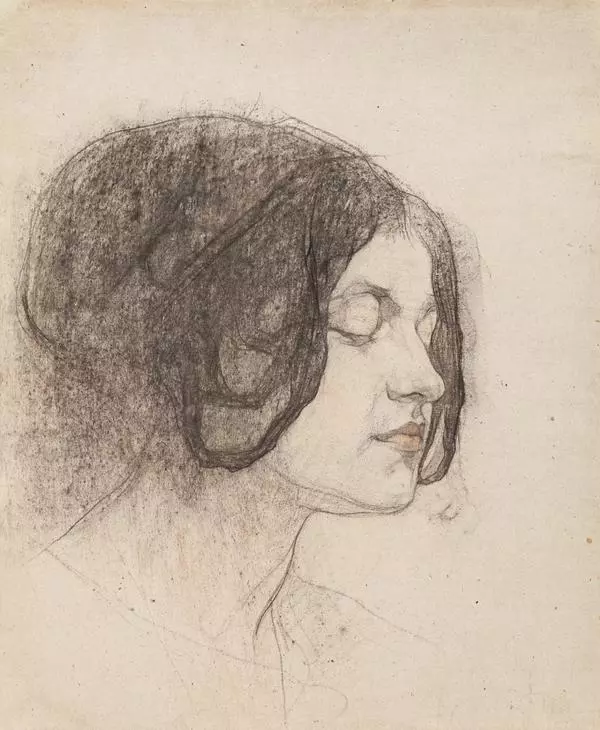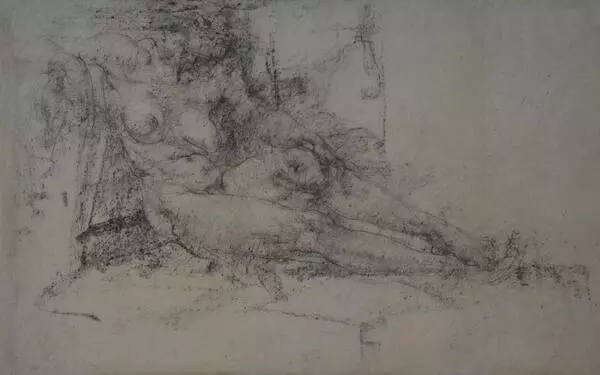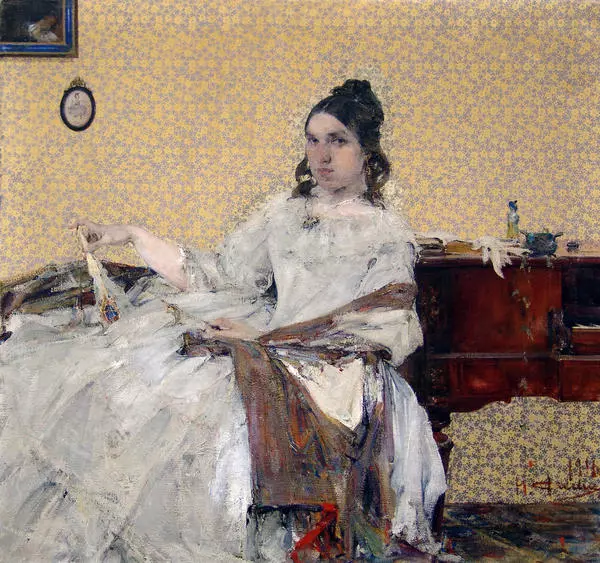Nikolai Fechin was born in the family of an iconostasis carver in 1881. At the age of 19, he entered the Academy of Arts and got in Ilya Repin’s studio which was the most popular and demanded in those years. Fechin’s creative philosophy was formed under the influence of Repin’s realistic pieces. The artist tried to find something unique in each model, to convey on the portrait the main features of the character’s appearance and soul, adding, at the same time, a special poignancy to the image. Fechin did not like smooth painting looking like decorative and applied art. He painted with robust, wide strokes, in the manner close to Repin’s.
Fechin’s individual style was formed at the junction of multiple artistic trends of the 20th century. It combined the academic basis, realistic traditions of Itinerants, some methods of impressionism, and the impact of expressionism. Fechin’s paintings resulted from natural, “fleeting” glimpses and the subtle art direction. Art critics believe that the artist painted in the modernist style, “transitional style of transitional time”. And Fechin himself characterized his creative vision the following way: “as to me, I always tried to express the subject technically, basing my work on technical execution, rather like a consummate musician than a musician-composer”.
The artist’s unusual artwork was highly appreciated by both the critics and the public. ‘If you want to see a miracle, go to Fechin’s exhibition’, journalists write. And Ilya Repin used to say about his student: “Among modern painters, Fechin is the most outstanding”.
Nikolai Fechin’s portraits distinctiveness comes from the plastic and color structure, as well as the choice of unusual angles and original compositions. Thus, the composition of Golden Hair unfolds in a circle. The turn of the model’s head and her moved aside arm produce the feeling of movement. And the girl’s face is placed in the middle of this circle.
Fechin created this portrait in 1914, when he worked as a teacher of art in Kazan. At that time, he often painted students of the local art school, and the scholars believe that one of them became a model for the Golden Hair.
On the portrait, Fechin reflected the natural grace and impulsive emotionality of his model, combination of her feminine nature and determined character showing itself in the girl’s sharp and direct look.
Fechin’s individual style was formed at the junction of multiple artistic trends of the 20th century. It combined the academic basis, realistic traditions of Itinerants, some methods of impressionism, and the impact of expressionism. Fechin’s paintings resulted from natural, “fleeting” glimpses and the subtle art direction. Art critics believe that the artist painted in the modernist style, “transitional style of transitional time”. And Fechin himself characterized his creative vision the following way: “as to me, I always tried to express the subject technically, basing my work on technical execution, rather like a consummate musician than a musician-composer”.
The artist’s unusual artwork was highly appreciated by both the critics and the public. ‘If you want to see a miracle, go to Fechin’s exhibition’, journalists write. And Ilya Repin used to say about his student: “Among modern painters, Fechin is the most outstanding”.
Nikolai Fechin’s portraits distinctiveness comes from the plastic and color structure, as well as the choice of unusual angles and original compositions. Thus, the composition of Golden Hair unfolds in a circle. The turn of the model’s head and her moved aside arm produce the feeling of movement. And the girl’s face is placed in the middle of this circle.
Fechin created this portrait in 1914, when he worked as a teacher of art in Kazan. At that time, he often painted students of the local art school, and the scholars believe that one of them became a model for the Golden Hair.
On the portrait, Fechin reflected the natural grace and impulsive emotionality of his model, combination of her feminine nature and determined character showing itself in the girl’s sharp and direct look.
